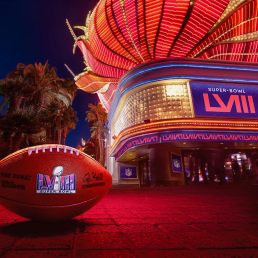The new age of advertising: Persuasion & craftsmanship rise in the wake of the death of the cookie
On a bleak, chilly and rain-soaked morning in late 2024, a funeral service is being held in a cemetery somewhere on the outskirts of Silicon Valley.
Big tech execs, performance brands, and marketers huddle under black umbrellas to pay their respects to a promising life cut short.
The 3rd party cookie has died.
But there’s someone noticeably absent. The creative industry. As a betting man, I’d guess they were celebrating.
It’s been 15 years since Facebook launched its ad products and heralded the dawn of a new age of advertising effectiveness.
What has followed has been a decade and a half where we’ve been so focused on performance and promotion we’ve forgotten the necessity of persuasion.
This obsession with the delivery of advertising to consumers has meant we’ve neglected the intuitive breakthroughs of yesteryear that made advertising work with consumers.
Maybe that’s because advertising, for the most part, is the dark arts of probables and likelihoods. Saying the same thing enough in an entertaining and memorable way so that maybe, just maybe, someone will buy it one day (when they’re actually ready to buy it).
Which is pretty much a direct conflict with the promise of exactness and efficiency of digital and performance.
With both sides of marketing tending to gravitate towards what’s shiny and new, perhaps, now is the time to pause and get back to some of the basics and regain the attention and, indeed, affection of the buying public. After all, we’ve now got access to marketing science literature to help shape and defend persuasive thinking.
I believe the way forward is a bit of both. Of the timeless proven practices of effectively growing brands balanced with new-school media thinking to increase effectiveness and efficiency.
Especially for those brands who’ve hacked growth and have maxed out on performance advertising. Without the resources of the large sized companies who will be able to effectively access and leverage first party data, these others will now need to reorientate and consider the longer term, slower play of brand marketing as well.
But for many this will come with a huge challenge. Growth marketers lack the experience of building a brand and managing that journey with stakeholders who have become accustomed to immediate results.
Take eco-cleaning brand, Koh, who launched their first ever TV campaign since launching in 2016. The result is a kind of confused brand/retail spot which doesn’t create any memorable distinction for consumers. It’s focused on the problem (people don’t like to be reminded of their problems) instead of the solution and lacks the craft of getting the message across in as simple and efficient a way as possible.
Now compare it to this Mr Clean ad which probably has a similar insight. It’s steamy and attention grabbing, funny, has a story, a great use of their distinctive brand asset, no time wasted.
Whatever the case, we should applaud Koh for taking the step forward and realising that longer growth as an area for investment. What their example does is shine a light on the timeless principles of marketing science that can’t be neglected when investing in a brand and that shit delivered at the speed of light is still shit.
For those of us working in the creative industry, let’s not mourn the passing of third party cookies too greatly. Yes, it’s time to reignite the flames of persuasion and craftsmanship in advertising for longevity rather than the quick fix. But we must remind ourselves, that it was perhaps our too slow adoption of digital that opened the door to the influx of short term thinking in the first place. So let’s raise our umbrellas not in sorrow, but in celebration, where quality triumphs over quantity, where there’s a healthy mix of old and new, long and short and where impactful messaging resonates long after the rain has cleared.
Whatever the case, we should applaud Koh for taking the step forward and realising that longer growth as an area for investment. What their example does is shine a light on the timeless principles of marketing science that can’t be neglected when investing in a brand and that shit delivered at the speed of light is still shit.
For those of us working in the creative industry, let’s not mourn the passing of third party cookies too greatly. Yes, it’s time to reignite the flames of persuasion and craftsmanship in advertising for longevity rather than the quick fix. But we must remind ourselves, that it was perhaps our too slow adoption of digital that opened the door to the influx of short term thinking in the first place. So let’s raise our umbrellas not in sorrow, but in celebration, where quality triumphs over quantity, where there’s a healthy mix of old and new, long and short and where impactful messaging resonates long after the rain has cleared.
Read the article on B&T →
Super Bowl LVIII Ads: Touchdowns & Fumbles
Pre-game teasers, hijacking tactics and audience participation are all some of the tactics marketers are trying to leverage in an effort to stretch their dollars beyond the fleeting 30 second spotlight.
Rather than covering and rating every single ad from the Super Bowl, we’ll be looking at only the best, and the worst to see who nailed it, and who fumbled and dropped the ball.
TOUCHDOWNS
DOOR DASH ENCOURAGES VIEWERS TO ‘DOOR DASH ALL THE ADS’
A clever activation that hijacks every other Super Bowl ad and turns it into one for DoorDash by promising to deliver one lucky fan every product they see in every single commercial – snacks, beauty, holidays, beers, cars and tax services (to name a few).
It’s a unique way to show the breadth of their service, and create noise against competitor Uber Eats who enlisted celebrity heavyweights.
DORITOS, JENNA ORTEGA AND A PAIR OF DAREDEVIL ABUELAS
Kicking off the pre-Super Bowl buzz, Doritos dropped a teaser with Jenna Ortega that took a wild twist when the actual ad hit the screens.
The spot features her two abuelas, Dina and Mita going to extreme lengths to get some Doritos. Picture supercharged mobility scooters, a dash of kung fu, wire stunts, and parkour – all in one. It’s quirky, unforgettable, and a blast to watch.
OPENDOOR SELLS A HOUSE DURING HALFTIME
Opendoor makes it easy for people to sell their own with a Virtual Assessment tool. In the ultimate product demonstration during halftime, they advertised a real user’s home with a live stream to show just how simple and easy their platform can be.
We love how they transformed a simple product demonstration into a creative use of media which will undoubtedly find a buyer off the back of it, and generate further PR beyond the Super Bowl.
LIQUID DEATH USES ITS BIG GAME AD TO SELL LITTLE ADS
Liquid Death, a brand that sells tap water in a can with fancy packaging has taken a pretty unhinged approach. Their big game ad is an ad to sell ads on the side of their packaging via an eBay store.
In a sea of polished ads packed with celebrities it stands out like dog’s balls and gives them the potential to recoup the cost of their air time – because they certainly didn’t spend a lot on the production of the spot itself.
FUMBLES
MILLER LITE MISSES THE MARK IN AUDIENCE PARTICIPATION
If convoluted was an ad, this would be it. Miller aimed to sign up 1,000 people before the Super Bowl to wear a branded QR code shirt and encouraged them to go for a run outside during the ad breaks for a chance to win beer. Why anyone thought fans would willingly leave the comfort of their sofas to run the empty streets while half cut is a mystery.
If you want to watch an example of a great activation turning fans into ads then look no further than Tui’s Catch A Million campaign.
MICHELOB ULTRA’S AD FEATURING MESSI IS A COMPLETE MESS
It’s basically just Messi dribbling (and that’s exactly what this ad is – dribble) a CGI soccer ball on the beach for two minutes while he waits for the keg to be replaced.
The amount of high powered talent in this spot isn’t enough to make this one interesting. It’s celebrity for celebrities sake. At least the other beer brands tried to be interesting with this year’s spots.
UBER EATS FORGETS YOU CAN’T JUST WHACK A CELEBRITY IN AN AD AND CALL IT DAY
Uber Eats’ teaser with Victoria and David Beckham showed some promise and intrigue by playing off a viral moment from the Beckham Netflix documentary.
However the final ad missed the mark with a barrage of forgetful celebrities. It’s a far cry from the local ‘Get almost almost anything’ work which, in our opinion, is much more clever and memorable.
In the battle of delivery giants, DoorDash takes out the championship.
TRENDS
THE ABSENCE OF AI
AI is the hot topic for everyone at the moment, yet there was a significant lack of ads in this space. In previous years when Crypto was all the rage we had Matt Damon, Larry David and others gracing our screens.
CELEBRITIES GALORE
The overwhelming majority of ads this year were packed with celebrities – some in lieu of having an actual idea. Chris Pratt sold Pringles, Post Malone sold Bud Light, Christopher Walken drove BMWs. Some of the most impactful ads this year actually featured no celebrities at all.
THE TAYLOR SWIFT EFFECT
Beauty brands saw an increase in spend during Super Bowl – not so much on TV but on social media, in large part due to Taylor Swift’s effect on ratings.
SPORTS BETTING CAN’T BE STOPPED
Since the legalisation of sports betting in the US in 2018 it’s becoming more and more prominent every year. With this year’s Super Bowl being held in Las Vegas it’s no doubt that betting brands made up some heavy rotation, not just during ad breaks but with broadcast integration as well.
VERY FEW HOLLYWOOD BLOCKBUSTERS
With the exception of Ryan Reynolds and the launch of the Deadpool trailer, there was a clear absence of Hollywood blockbuster trailer drops which could be attributed to the writer’s and actor’s strikes last year causing a delay in titles being released.


